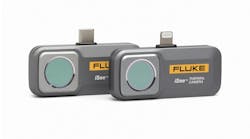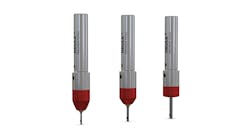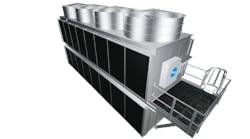Final results are expected to be published soon for a research study of “Surface Finish Effects of Fatigue Behavior of Forged Steel,” by Dr. Ali Fatemi, sponsored by Steel Market Development Institute’s Long Products Market Development Group. The study is seen as a resource for mechanical engineers designing forged steel parts that will be lightweight and cost-efficient components for cars and trucks.
A summary of the report was presented in April at the Forging Industry Assn.’s Technical Conference, in Schaumburg, IL.
The Steel Market Development Institute is a business unit of the American Iron and Steel Institute that promotes uses for steel in the automotive, construction and container markets, and seeks growth opportunities in emerging steel markets. SMDI’s Long Products Market Development Group (LPMDG) is a forum for long-products steelmakers, including Gerdau Ameristeel, Gerdau MACSTEEL, Nucor Corp., and The Timken Company.
Dr. Ali Fatemi, Ph.D., is a professor at the University of Toledo, Ohio, and an authority on fatigue, materials and composites, mechanical behavior, mechanical design, and fracture mechanics. In addition, he is a principal investigator for projects sponsored by SMDI, Long Products, and the Forging Industry Educational and Research Foundation.
In his presentation to the FIA conference, Fatemi explained that fatigue fractures are the most common mechanical failure for components and structures in vehicles that can result from a rough surface finish.
The study, expected to be released in full later this year, examines a steel billet’s surface finish as a function of hardness and fatigue life, based on new experimental data.
“Surface finish has a significant effect on fatigue behavior; and factors used in many mechanical engineering textbooks today to correct these conditions are based on data that is nearly 70 years old,” David Anderson, director of SMDI’s Long Products Market, said. “We encourage the use of this updated research in future textbooks, as it will provide engineers with the data to design optimized parts, providing automakers with low-mass and cost-effective designs.”
In a previous report on the research, Fatemi explained that the project’s objectives were to evaluate and quantify forged surface-finish effects on fatigue resistance of common forging steel — 10B40 steel, ASTM 6.5, 215 BHN — for a broad range of conditions, including:
- Heating methods (induction heating versuse gas-furnace heating);
- Hardness levels (90 HRB to 45 HRC);
- Residual stresses (with or without shot cleaning);
- Fatique life regimes (short and long lives);
- Loading conditions (cantilever bending and rotating bedning);
- Effects of machined surface (from forging versus ba stock); and
- Trim or flash effect (with or withour the trim line.)
The study includes examples of the test results for material microstructure, decarburization rates according to heating method, and stress and fatigue testing, among various others.
Among the preliminary conclusions Fatemi reported that gas-furnace heating for forging might result in a deeper decarburization layer and surface discontinuities than induction heating, the differences in fatigue behaviors appear to be small.
Also, for machined and polished specimens the fatigue limit increases as the hardness increases, but 25-HRC and 35-HRC as-forged specimens experienced a higher fatigue limit than the as-forged 45-HRC products.
In addition, flash seems to have only a minor effect on forgings’ fatigue behavior, and a lower fatigue limit is obtained under rotating bending than under non-rotating cantilever bending loads.
Lastly, Fatemi's earlier report observed that experimental data indicated much less reduction in fatigue strength due to forged surface finish, compared to the surface finish factors based on earlier data.
A comprehensive report on Fatemi’s research, including data and analysis, is expected to be published this year.
| SMDI UPDATES BAR STEEL PRODUCTS MANUAL “The updated manual will help guide materials engineers in the application of high-quality bar steel products,” according to SMDI Long Products Market director David Anderson. “By providing the most up-to-date information that can save manufacturing time and cost, steel will remain the material of choice for future applications.” The revised volume includes an expanded section on the manufacturing processes of hot rolled steel bar products; general technical product information on steel bars and bar product applications; a new section on the selection of bar products for an application; and updated properties of steel bars and bar products. Anderson added that technicians with long-products industry experience have reviewed the new manual. For more information, visit www.autosteel.org. |










